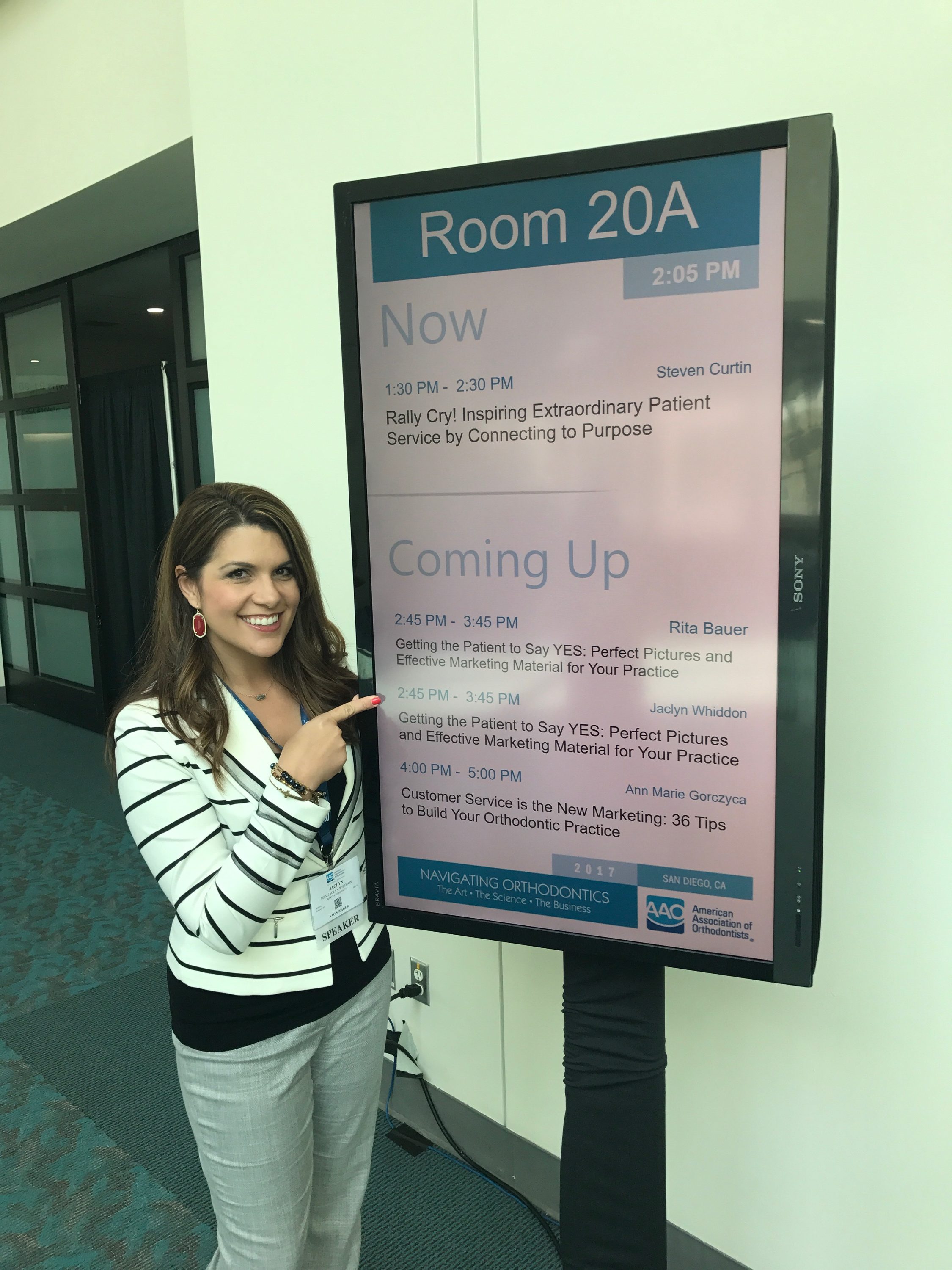
Getting the new patient to say YES to orthodontic treatment
I’ve had the pleasure of presenting at the American Association of Orthodontists annual meeting about marketing an orthodontic practice. I co-lectured with Rita Bauer at the AAO about the importance of excellent pictures as part of your orthodontic marketing. Pictures play an important roll in much of the orthodontic process, including marketing! With permission, you can use them to showcase before and after treatment during case presentation, for marketing campaigns and digital marketing. There’s nothing like a visual during a new patient exam to showcase your practice as the best option for a patient’s orthodontic care.
After a new patient has come in for a consultation, and you and the staff have done your best to make him or her feel great about the experience at the practice. Think you’re done? Well, I’ve seen too many offices that thought they were. That’s just not the case.
What do you currently do to follow up with patients that do not schedule during their consultation? When you don’t have a solid plan in place for following up with a patient that did not immediately schedule treatment, you may lose that patient forever. I’ve heard all the reasons that this essential follow-up doesn’t happen. Mostly those reasons boil down to this: Everyone’s too busy!
I get that, BUT it is much easier to convert someone who’s already come in to see you than it is to find another patient to come in for a consultation and go through the entire marketing process again. You’ve already done the hard work – so why not take a few simple strategic steps in a timely fashion to lock in the treatment with the new patient?
Here are a few suggestions for implementing effective post-consultation follow-up:
- Before they leave, set up a time to call them to follow up.
- Communicate the diagnosis and treatment plan to the patient’s dentist through a letter. If the dentist is the referral source, be sure to thank them!
- Hand-written notes to the patient or parent are very impressive.
- Send a recommended treatment letter if there is no response to the follow-up call.
- Consider additional phone calls or letters after the new year if insurance was an issue or other individual situations prevented the treatment commitment.
Remember, scripting is very important. You want to communicate through your calls and letters the importance of the treatment recommended – and, just as importantly, the value of your particular level of service.

